Katie Byerly, also known as Iowa Prairie Girl, profiles a rare, beautiful plant native to 20 states and most of Canada. -promoted by Laura Belin
I was walking through Ada Hayden Prairie in Howard County, Iowa, the first time I saw Purple rattlesnake-root (Prenanthes racemosa). Anytime I see a new plant I find myself thinking out loud “I wonder what that is?” But the first time I saw purple rattlesnake-root, sometimes called Glaucous white lettuce, it hadn’t bloomed yet and my wondering was more like “what the in the world is that??!” And maybe a few other words too.
Before it blooms, this tall, straight un-branching plant looks a small tree covered with fuzzy, purple Q-tips.
The bracts form a 1/2 inch long tube that is deep purple and covered in long, white hairs. I notice as I review my pictures it is whiter or hairier weeks before it flowers and appears to lose some of its hairiness as it gets closer to opening up. The stem is also this same purple color with white hairs.
This sun loving, wet prairie flower reaches a height between 2 and 5 feet. It truly is a peculiar and unusual looking plant before it flowers, and maybe even still while it is blooming.
This late summer I was fortunate to find hundreds of purple rattlesnake-root plants blooming again at Ada Hayden prairie. The white to pinkish flowers clarify that it is actually a flower. These flower heads are about 1/2 inch across and made up of only ray flower petals. According to Minnesota Wildflowers, the flower has styles that are longer that the ray petals with divided, curved tips. The stamens are purplish and shorter than the styles.
These pictures show the divided curvy styles:
This picture shows the flower blooming from the leaf axils:
More views of purple rattlesnake-root flowers:
Practically the only thing on purple rattlesnake-root that isn’t hairy is the leaves. The smooth simple leaves alternate on the stem, becoming smaller as they ascend. Towards the bottom the leaves have a winged stems; further up the main plant stalk, leaves become clasping.
It is difficult to find a lot of information on purple rattlesnake-root. It is not mentioned in Ladd’s book, Tallgrass Prairie Wildflowers. Nor do Runkel and Roosa reference it in every Iowan’s favorite wildflower guide, Wildflowers of the Tallgrass Prairie. I would love to imagine what Sylvan Runkel would have written about this unique prairie plant. I will just close that this seemingly rare plant does seem out of place when you first discover it and it definitely adds character to the prairie.

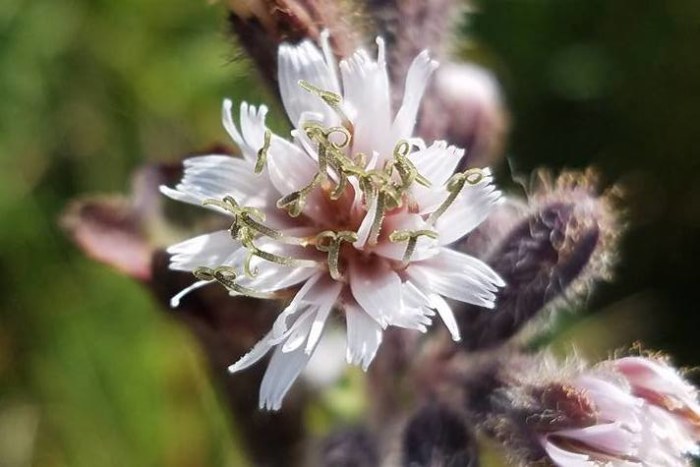
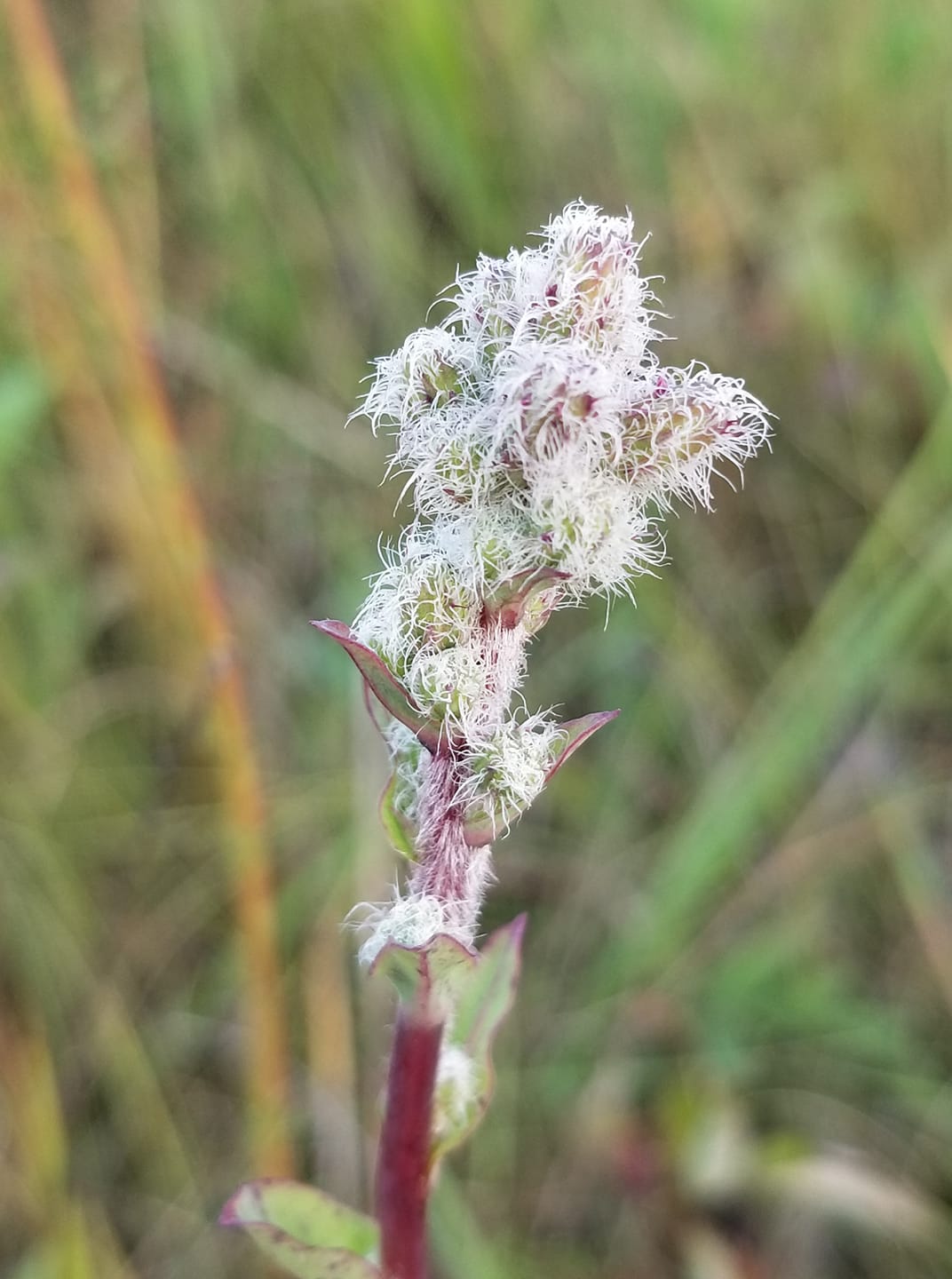
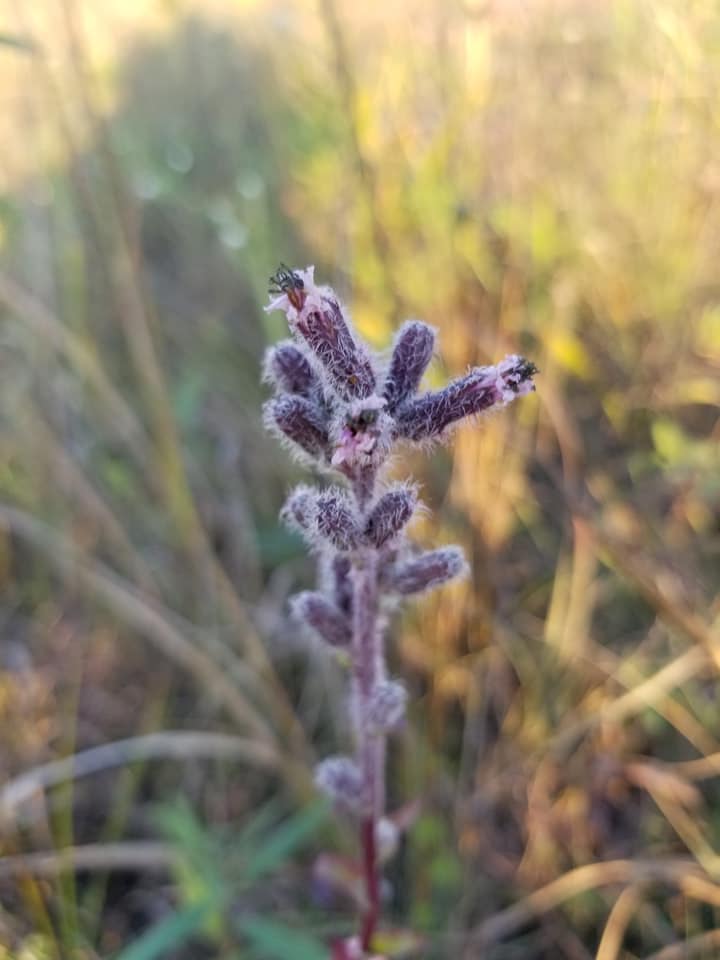
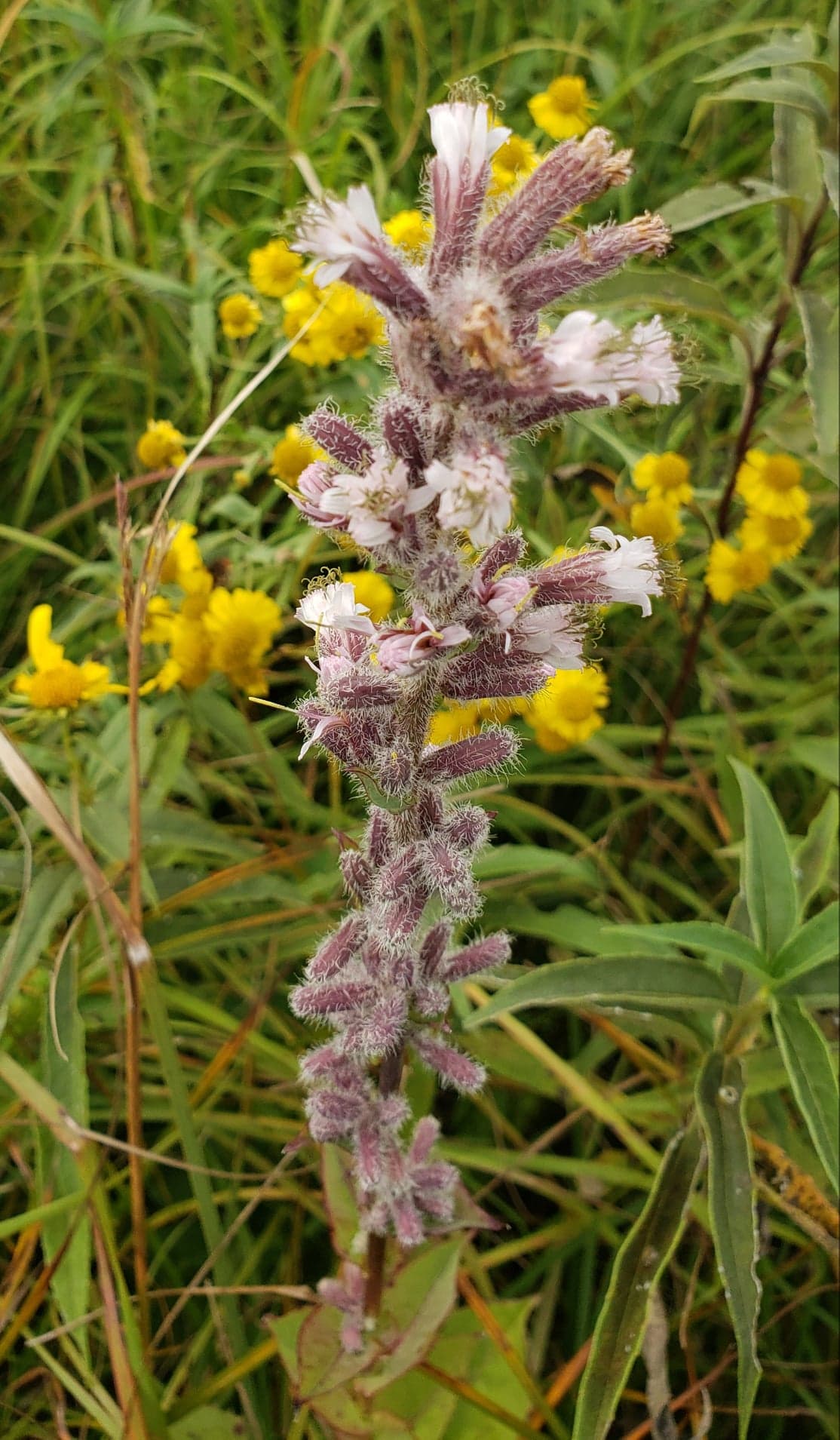
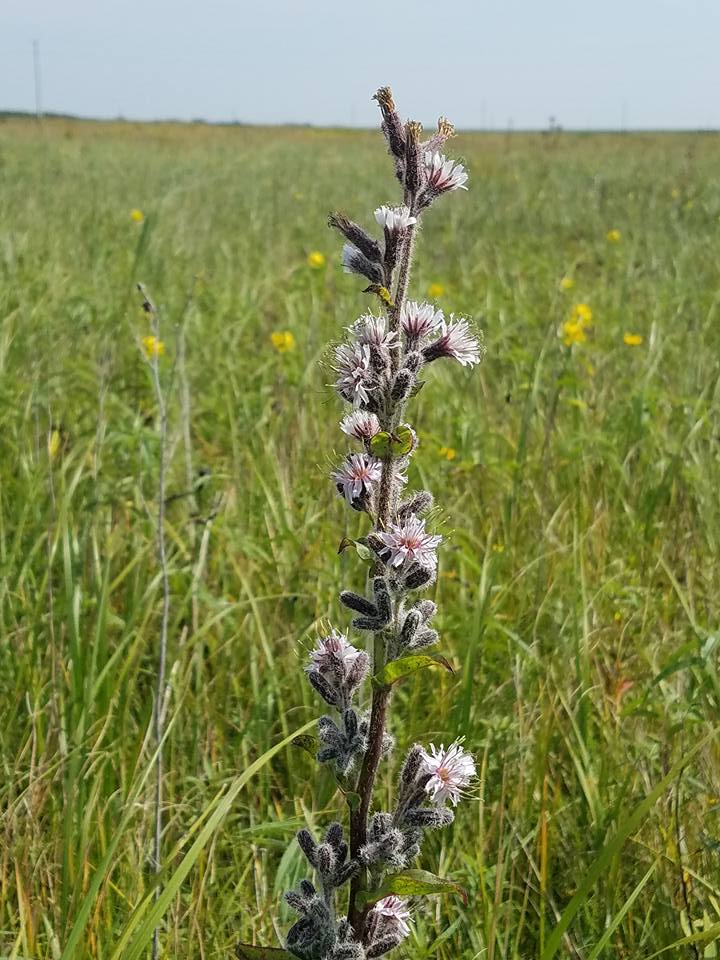
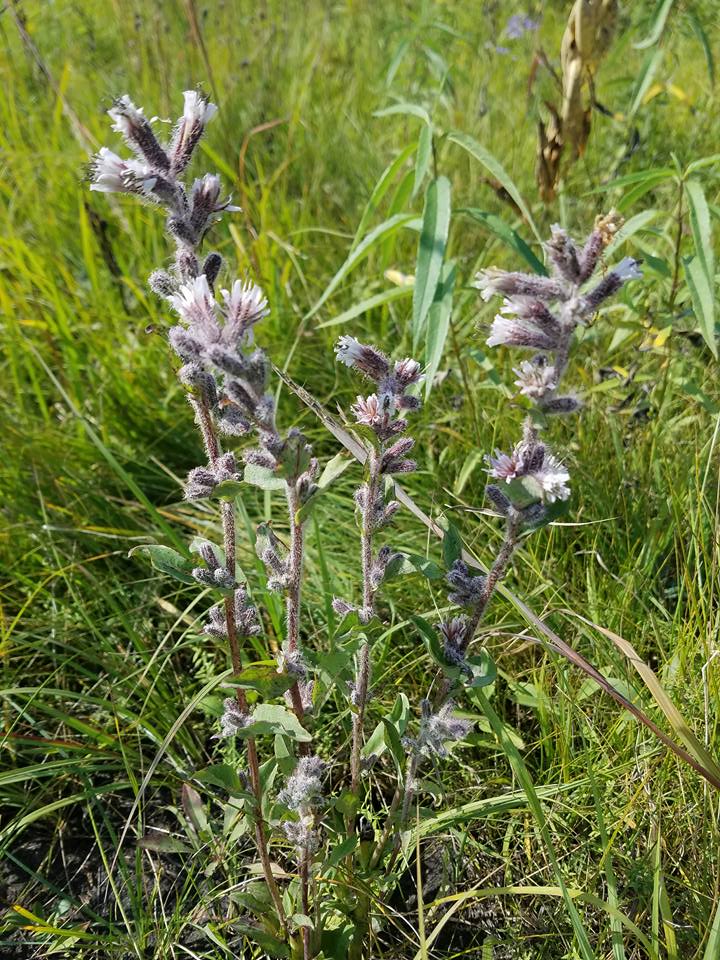
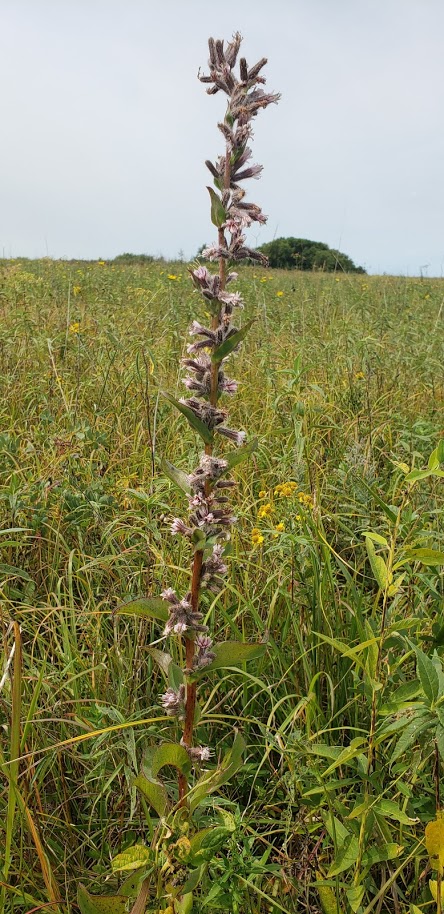
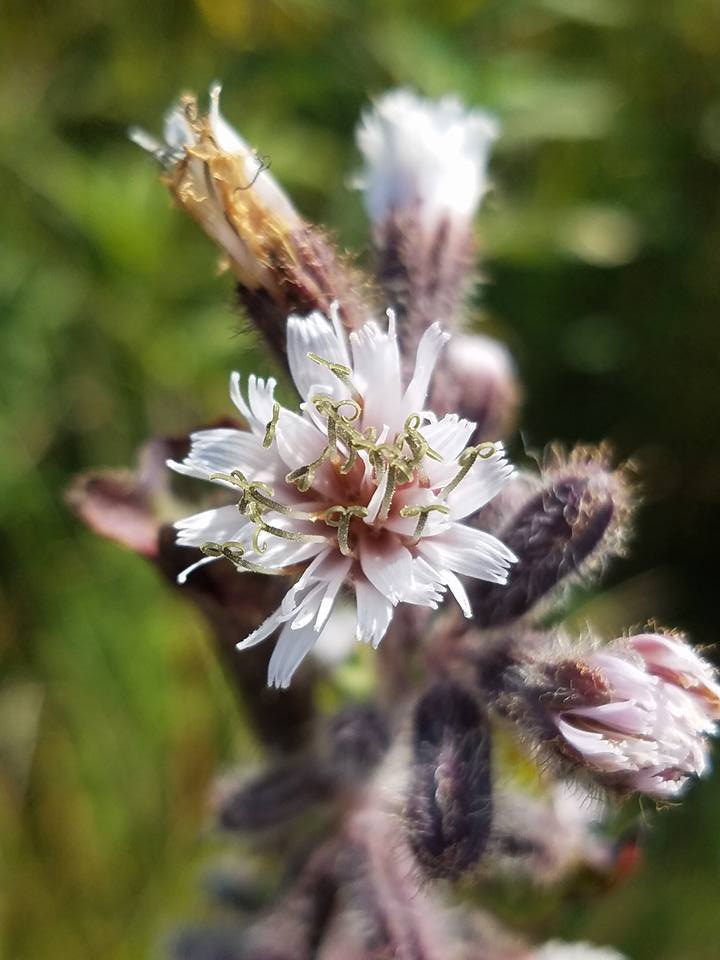
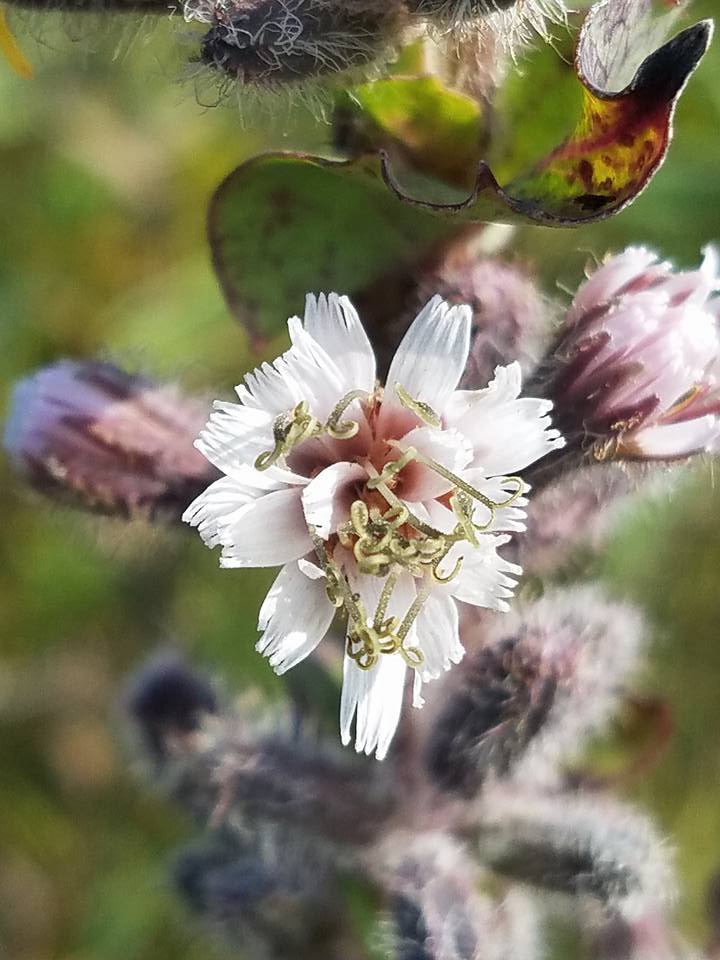
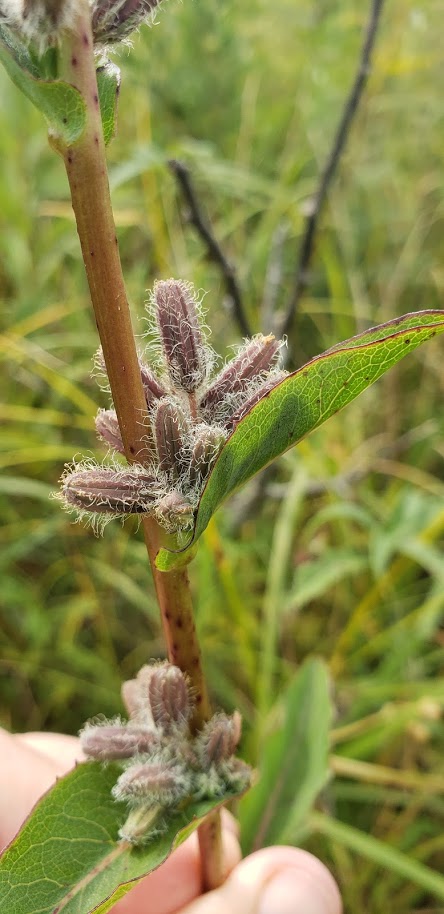
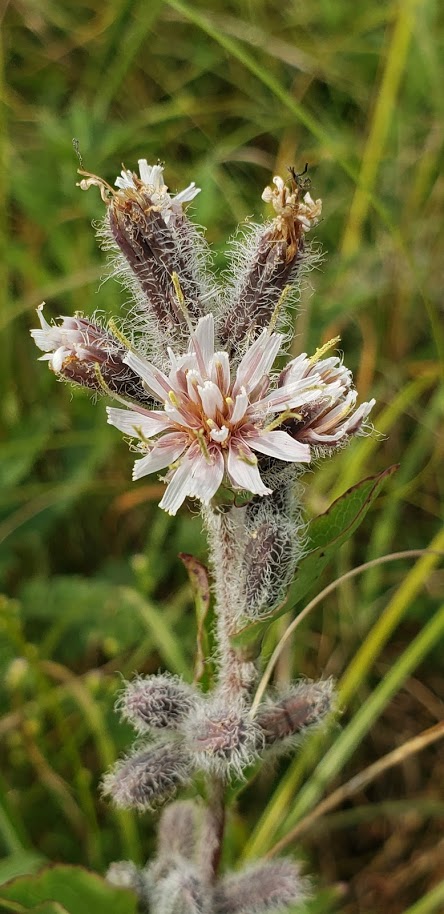
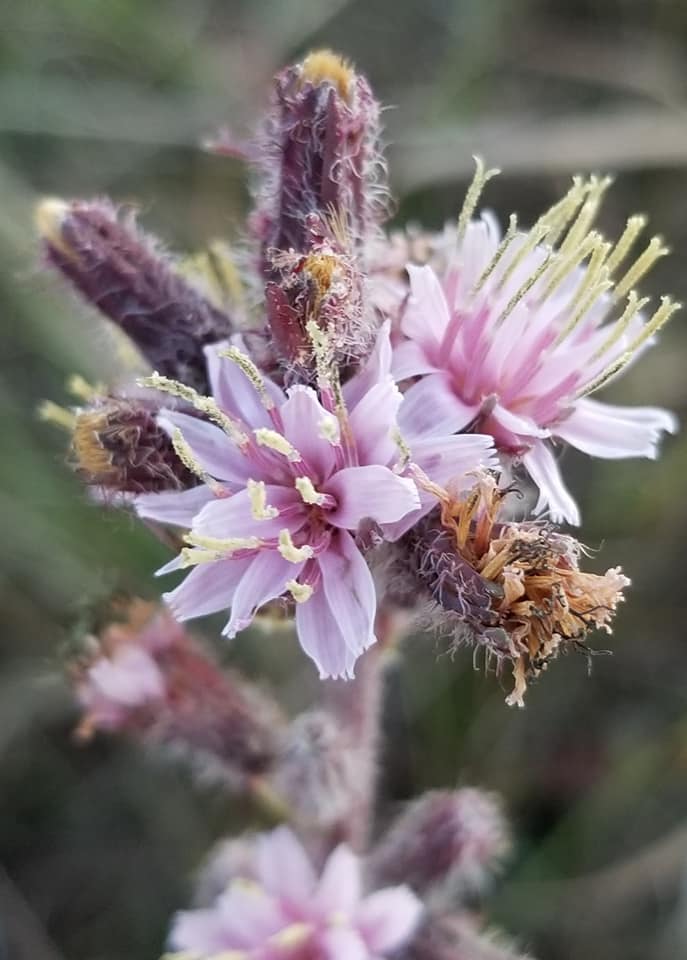
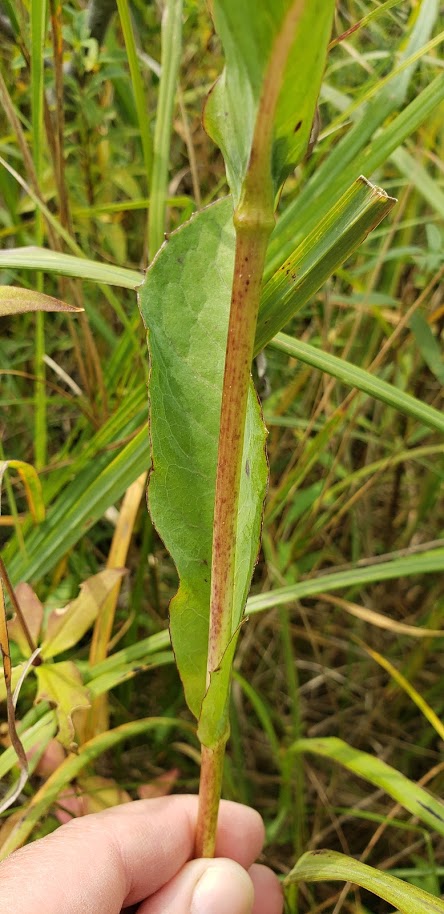
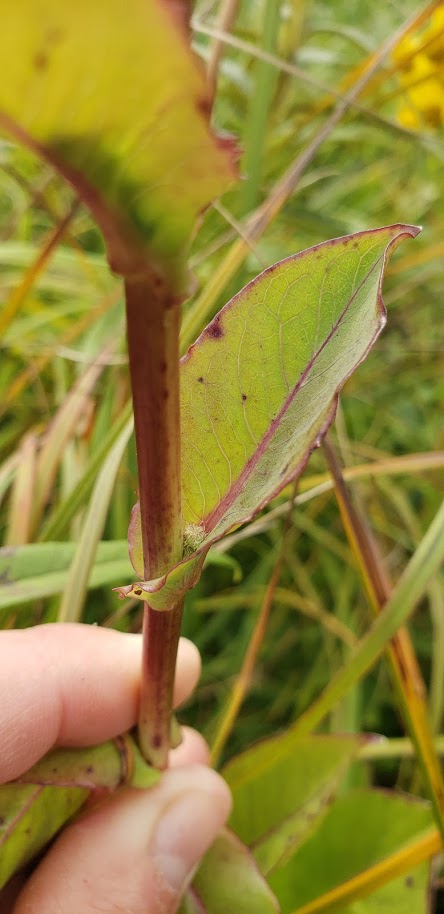
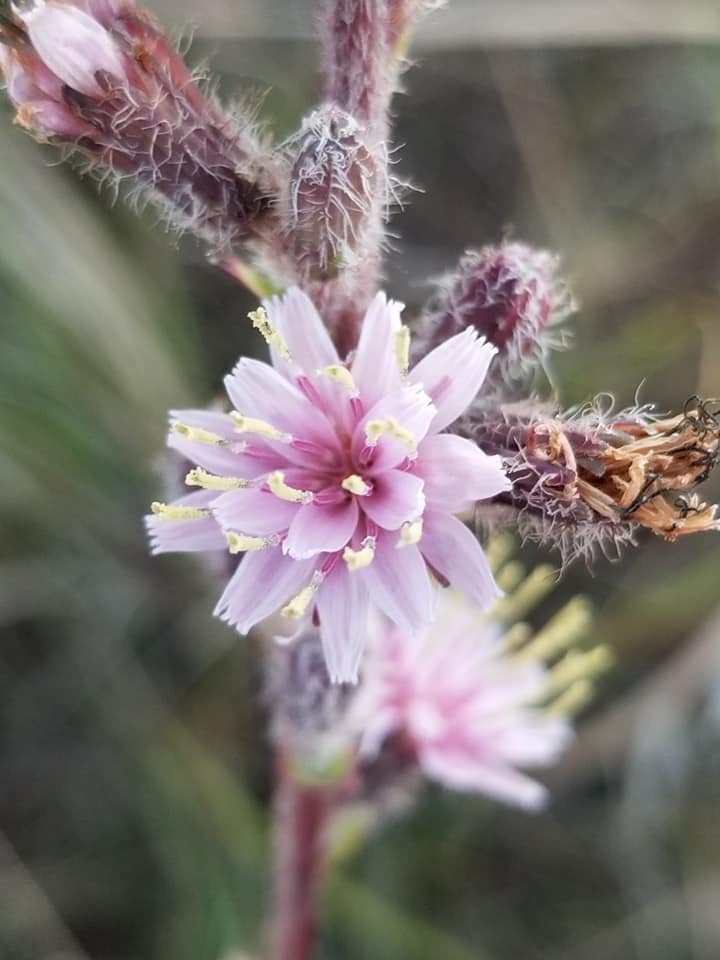
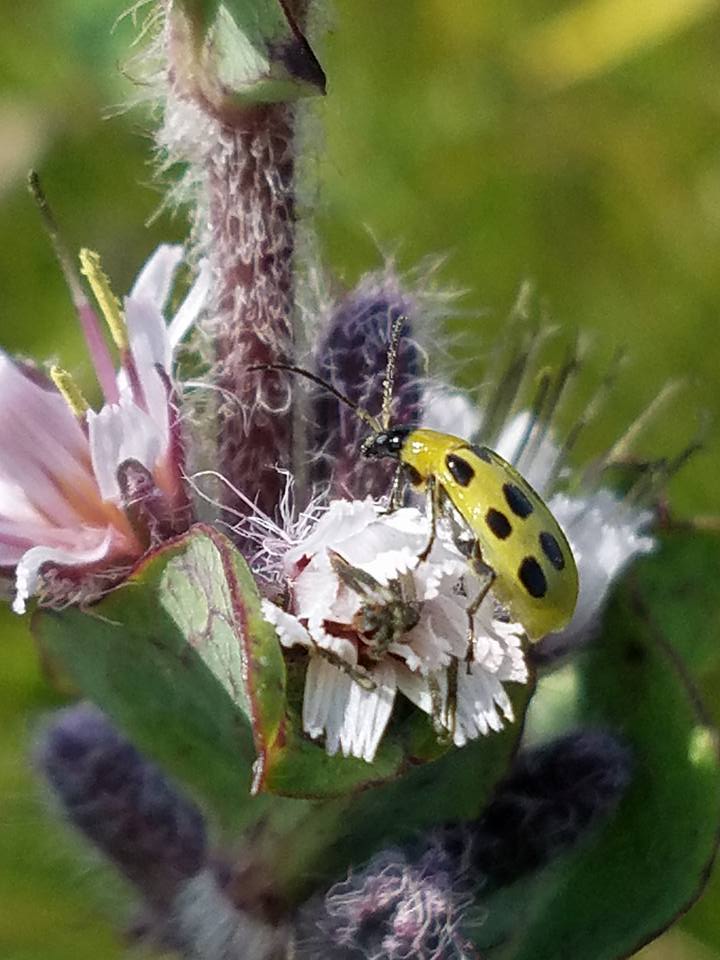
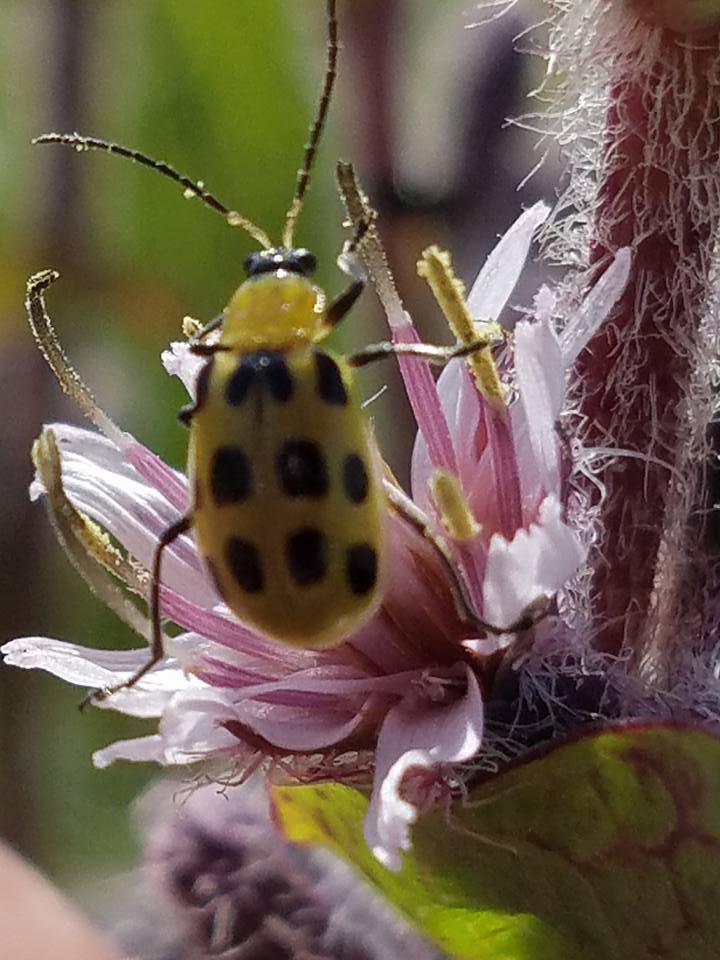
1 Comment
These good photos are also an example...
…of the importance of protecting our few remaining original prairie remnants. Many planted prairies in Iowa look somewhat alike, and CRP plantings especially tend to consist of limited numbers of species chosen partly because their seed is easily harvested and not too expensive.
We need original remnants partly so we’ll know what real prairies look like and what real prairie plant diversity looks like, including uncommon species like Prenanthes racemosa. By looking at original prairies, we can learn how to make our plantings better and more like the originals.
PrairieFan Wed 14 Oct 8:44 PM